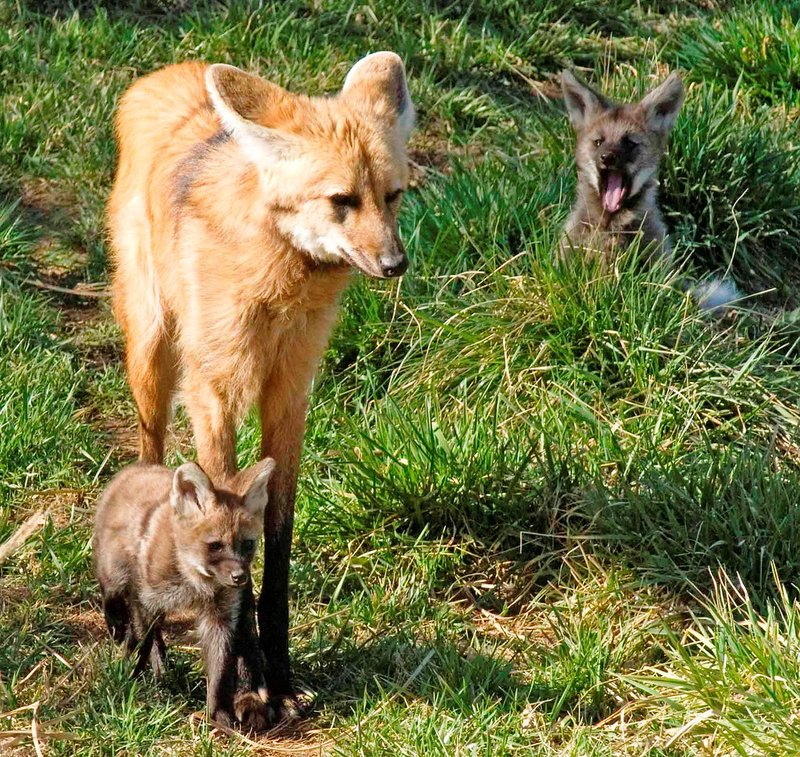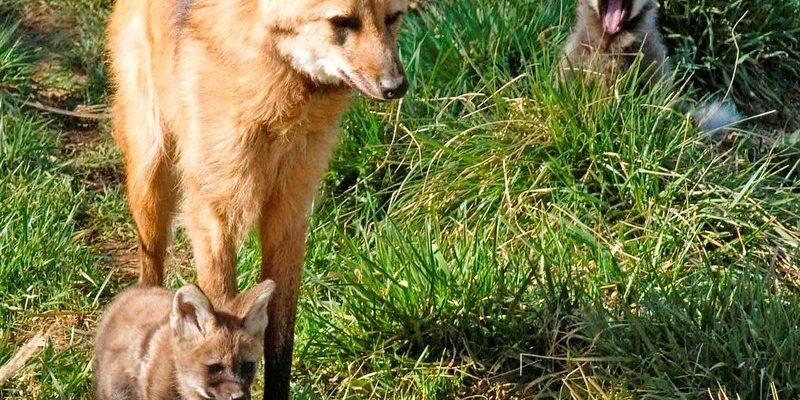
In this article, we’ll explore the incredible adaptations and secrets of maned wolves that help them cope in tough habitats. From their diet choices to their social behavior and physical features, we’ll dive deep into what makes these wolves so special. So, grab a cup of coffee, and let’s unravel the mysteries of how maned wolves survive in harsh environments.
Understanding the Maned Wolf’s Habitat
Maned wolves are native to the grasslands and savannas of South America, particularly found in countries like Brazil, Argentina, and Paraguay. Picture wide-open spaces filled with tall grasses and scattered bushes. These habitats can have extreme temperatures and varying rainfall, making survival a challenge.
What’s interesting is that maned wolves are incredibly adaptable. They can thrive in both dry and wet areas. During the wet season, their habitats can flood, but these clever creatures have learned to move to higher ground. In drier times, they may roam further in search of food. This ability to adjust to changing environments helps them find resources when times get tough.
The Maned Wolf’s Diet: An Omnivore’s Approach
You might think that finding food in harsh environments would be tough, but maned wolves have a surprisingly varied diet. They are omnivores, which means they eat both plants and animals. This flexibility is key to their survival.
So, what do they eat? Maned wolves primarily snack on small mammals, birds, and even insects. But here’s the fun part: they also munch on fruits, especially a type called wolf apple (or “laranja-de-espinho”). This blend of protein and carbohydrates equips them to survive in less predictable areas. When small prey is scarce, they can rely on fruits to fill their bellies. Talk about a balanced diet!
Physical Adaptations for Survival
Maned wolves are built for their environment. One of their standout features is their long legs, which help them navigate through tall grass and uneven terrain. Think of them as nature’s high-powered stilt walkers! These long limbs not only help them see over the brush but also allow them to run fast when they need to escape predators or chase after prey.
Their coat also plays a crucial role in survival. The reddish-brown fur helps them blend into their surroundings, making it easier to sneak up on prey. And during colder nights, their thick fur keeps them warm. This combination of physical traits not only aids in hunting but also protects them against the harsh elements they often face.
Social Behavior and Communication
You might be curious about how maned wolves interact with each other. Unlike many wolves that live in packs, maned wolves are more solitary creatures. They often hunt and roam alone, which can seem surprising. However, they do form monogamous pairs during the breeding season, which helps ensure the survival of their pups.
Communication is vital in their harsh environments. They use a range of vocalizations, from barks to howls, to signal each other. For example, the famous “maned wolf call” sounds almost like a high-pitched bark and can carry over long distances. This vocalization helps them maintain territory and communicate with potential mates. Isn’t it amazing how their social behavior has adapted to suit their survival needs?
Conservation Challenges
Despite being well adapted, maned wolves face several challenges in the wild. Habitat loss is a significant issue. As humans convert grasslands into agricultural lands, these wolves lose their homes. This makes it harder for them to find food and shelter.
Moreover, road traffic poses a deadly risk. With their natural habitats being fragmented, many maned wolves find themselves crossing busy roads, leading to accidents. Conservation efforts are ongoing to protect these magnificent animals. Many organizations work to raise awareness about their plight and promote measures to safeguard their habitats.
What Can We Do to Help Maned Wolves?
You might be wondering how you can make a difference for maned wolves. Here are a few simple ways to help:
- Support Conservation Efforts: Donate to organizations focused on wildlife conservation.
- Spread Awareness: Share information about maned wolves and their habitat challenges.
- Reduce Road Hazards: Advocate for wildlife crossings to keep these animals safe from traffic.
Every small action counts. By raising awareness and supporting conservation efforts, we can all contribute to a future where maned wolves thrive in their natural habitats.
The maned wolf is truly an extraordinary creature, perfectly adapted to survive in some of the harshest environments in South America. From their flexible diet to their unique social behaviors and physical adaptations, they have developed several survival strategies that allow them to thrive. But challenges remain, and it’s up to us to play a part in their conservation.
So, the next time you hear about maned wolves, remember just how resilient and resourceful they are. Their story is a reminder of the beauty of nature and the importance of protecting our wildlife. Let’s work together to ensure that these fascinating animals continue to roam the grasslands of South America for generations to come.

